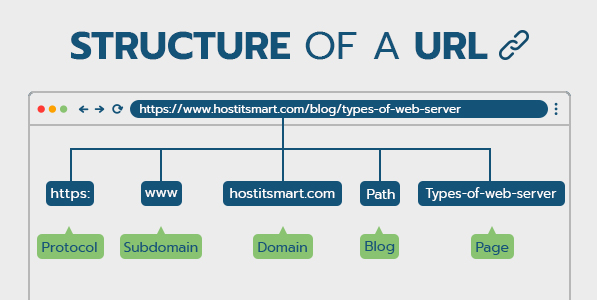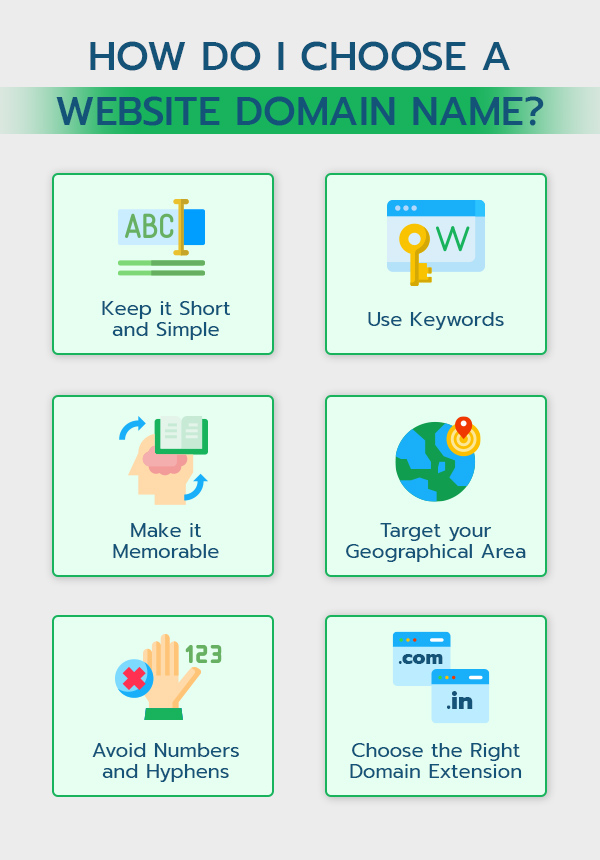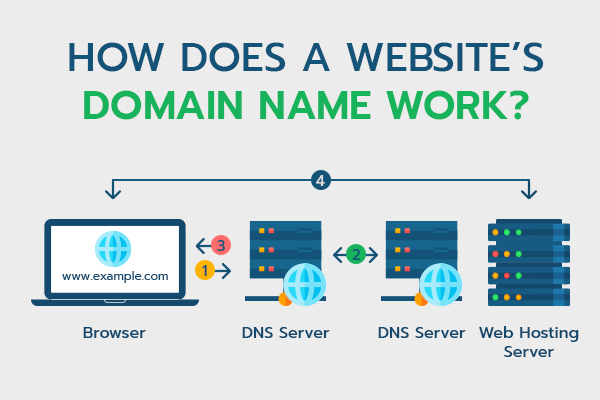If you are planning to start an online business, the first thing you need is the land you will build your business on, the internet real estate, i.e., the website for your business. You’ll have to create a website for your business to build an online presence, an online store, to start getting orders for your products or services.
But what role does the website name play in all this charade?
Well, a website name, more commonly known as a Domain name, is your business’s name. If your business website is the store, then the Domain name is the store’s name. And you need a unique, memorable, and catchy name to ensure your business’s success. You need to make sure that you leave no stones unturned if you want to succeed in any part of your life.
So, what are we going to learn in this article? If we were to answer this question in one sentence, it would be; Everything you need to know about the Website name?
Let’s get started.
What is a Website Name?
A website name, also known as a domain name, is the address people use to access a specific website online. It is the human-readable version of an IP address, which is the numerical label assigned to each device connected to the internet.
For example, let’s assume you have a business (which we shamelessly assumed previously as well), and you want your business to grow; what will you do; will you use your headquarter coordinates as your business name, or will you give it a catchy, memorable name?
You can always experiment with the coordinates, but to be sure about the growth, you’ll choose the latter. You’ll give your business a catchy, memorable name. A domain name is that ‘catchy and memorable’ name for your website instead of the IP address of your device, ‘the coordinates of your business headquarters.’
Examples of Website Name
➢ Google.com
➢ Amazon.com
➢ Airbnb.com
➢ LinkedIn.com
➢ Facebook.com
Also Read: Understanding Domain Names – A Complete Guide
What is a URL?
A URL, or Uniform Resource Locator, is the full address of a specific page or resource on the internet. It is the web address that people type into their web browsers to access a website or a specific resource on the internet. It provides a way for people to locate and access resources on the World Wide Web, such as web pages, images, videos, and files.
For Example, continuing the assumption from the previous section, the domain name is the name of your business, the name by which your business is identified throughout the market. And the URL of your website is the complete address of your business, so if somebody wants to visit your business premise, you can give them the complete address to make sure they easily find their way to your business, i.e., your website.
➢ Structure of URL
A URL includes the protocol (such as “http” or “https”), the domain name, and the path to the specific resource, which can include subdirectories and file names.

For example, the URL for the page for URL is
https://www.hostitsmart.com/blog/types-of-web-server
➔ Here, the URL starts with the protocol, i.e., https (hypertext transfer protocol secure).
➔ The second block, “www,” specifies the subdomain.
➔ The third block of the URL contains the website’s domain name with its TLD, i.e., “hostitsmart.com.”
➔ The fourth block of the URL path of the website, i.e., “blog,”
➔ The last block of the URL contains the specific web page reference, i.e., “types-of-web-server”
Also Read: SUBDOMAINS: What Is It & How Is It Helpful?
Website’s Domain Name vs URL
A domain name and a URL are both integral components of the internet. They are different from each other.
A domain name is a unique identifier for a website, and it is registered through organizations called domain registrars. In contrast, a URL (Uniform Resource Locator) is the full address of the website, a specific web page, or a resource.
A domain name only contains the website’s name, which is unique and memorable. In contrast, a URL includes different parts, like the protocol, domain name, and path to the specific resource.
Another major difference between the two is that URLs are not permanent; they can change over time due to different reasons, like website updates, changes in domain names, or changes in resource location.
In contrast, a domain name is usually registered for one to ten years and can be renewed afterward. Moreover, frequently changing a domain name is not good for the website’s growth, so it usually remains the same.
An example of a domain name is www.google.com, whereas an example of a URL is https://www.google.com/maps.
Also Read: What To Do When Your Domain Name Is Taken?
Types of Website Domain Names
There are different types of domain names. Below are some of the most common types:

1. TLD: Top-Level Domain
A top-level domain (TLD) is part of a domain name that comes at the last of the domain name, i.e., after the final dot. It is used to identify the type of organization or domain owner. Some of the most common TLDs are .com, .net, .org, .edu, .gov, and .mil.
2. ccTLD: Country-Code Top-Level Domain
These domain names are country-specific and include extensions like .in (India), .us (United States), and .uk (United Kingdom). ccTLDs are used by websites targeted to a specific country or region.
3. gTLD: Generic Top-Level Domain
gTLD are the most common types of domain names and are not country-specific. It includes extensions like .com, .net, and .org.
4. nTLD: New Top-Level Domain
nTLD are newly added domain extensions that provide more specific and meaningful options for businesses and individuals looking to register a domain name. This includes extensions like .blog, .shop, and .online.
5. Subdomain
These domain names are placed before the primary domain name and separated by a period, like “drive.google.com.” These are often used for different sections of a website.
Where is My Website Name & Who Manages it?
You can see the name of your website in its URL. A domain name registrar manages it.
A domain name registrar is an organization authorized by ICANN (Internet Corporation for Assigned Names and Numbers) to sell and manage domain names. You essentially rent the rights to a specific name for a certain period of time when you purchase it. You can find the registrar of your website name by doing a WHOIS lookup.
After registering a domain name, you will be given access to a control panel that you can use to manage the settings for your domain name, such as DNS record management, setting up emails, etc. You can also use the control panel to renew your domain name when it is due to expire.
How Does a Website’s Domain Name Work?
Here is how the website’s domain name works!

A domain name works when you register a domain name. A Domain Name System (DNS) is assigned information about the IP address that the domain name should direct to, along with other information about the domain.
When a user types a domain name in a web browser, the browser will request the DNS server to direct the domain name to an IP address. The DNS will then look up the IP address associated with the domain name and return it to the browser, which will then connect to the server and retrieve the website.
Also Read: Nameserver: What Is It And What Does It Do?
Benefits of Having a Website’s Domain Name
There are several benefits of having a domain name, including the following:
➢ Beneficial for Search Engine Optimization (SEO)
➢ Great for Marketing
➢ Creates Reliable Branding
➢ Benefit of Professional email address: you can create more professional email addresses like tom@mousecatcher.com
➢ Have Website address Customizability
➢ Create Individual Identity
Also Read: What Are The Benefits Of A Website For Small Businesses
How Do I Choose a Website Domain Name?
While choosing a domain name, you must consider these perimeters:

★ How Long Can a Website Domain Name be?
A domain name can be 63 characters. Although it is possible to have a domain name of up to 63 characters, it is recommended that you keep it short and simple.
Also Read: Top 13 Techniques To Find Creative Domain Names For Your Business.
How to Register Your Domain Name?
A domain name is a unique identifier for a website, and it is registered through organizations called Domain Registrars. These registrars are accredited by the Internet Corporation for Assigned Names and Numbers (ICANN) and are responsible for managing the assignment of domain names and IP addresses on the internet.
When a domain name is registered, the registrar will check that it is not already in use and then reserve it for the registrant. The registrant can then use the domain name to connect their website to the internet and create URLs allowing users to access specific resources on their website.
Also Read: How Do You Transfer A Domain Name?
Conclusion
We have covered all the basics of Domain names in this article. From what a domain name is to URLs and the difference between the two.
We also understood how important domain names are in websites and how to choose them smartly.
We hope we’ve answered all your questions.
Keep learning!



